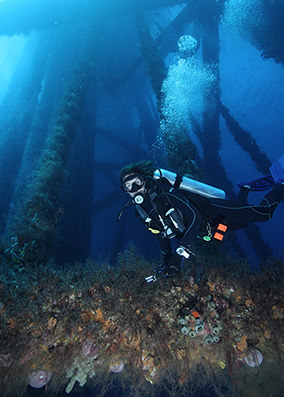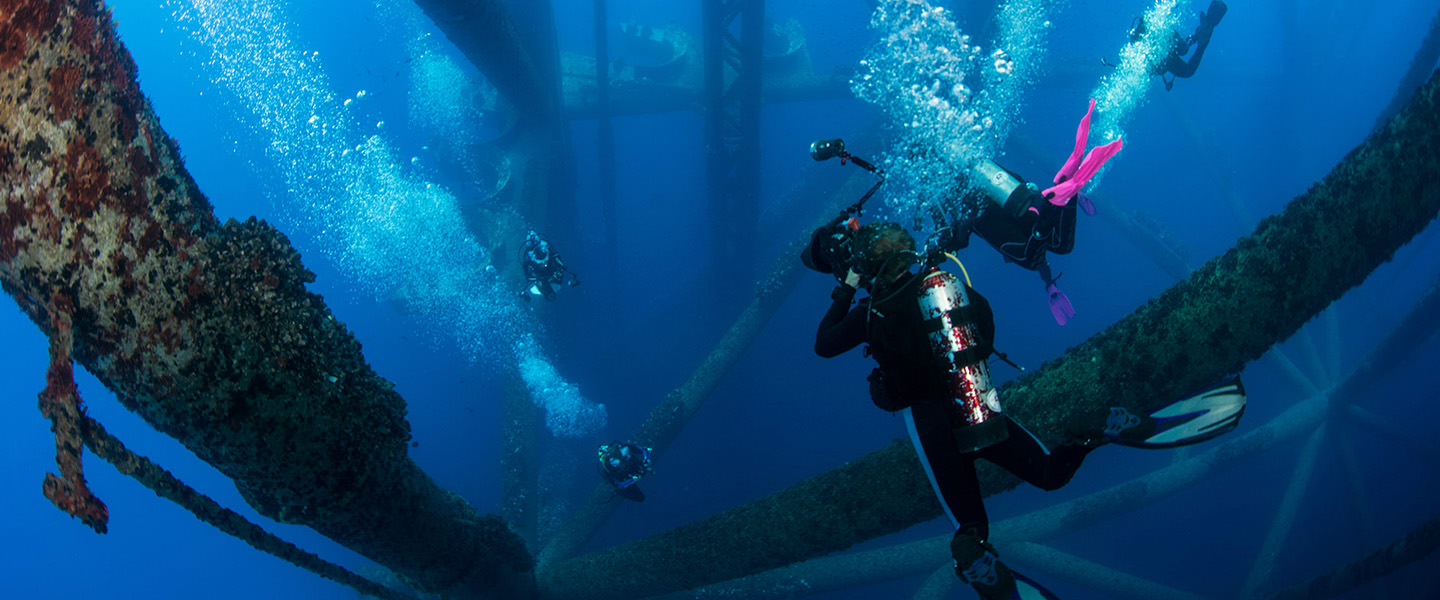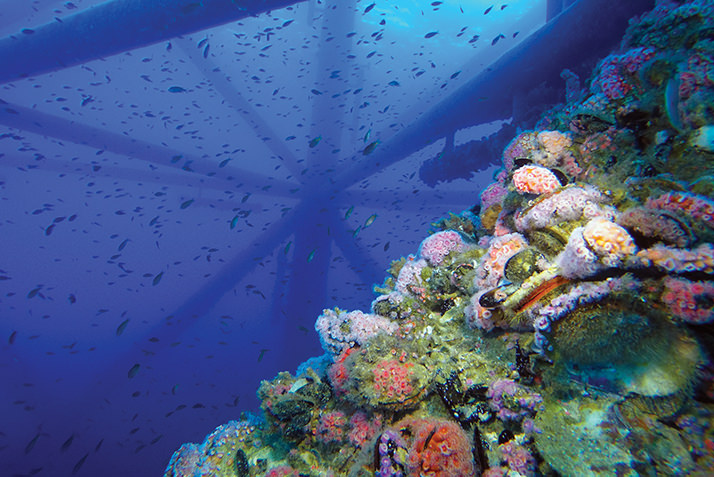Oil and Water
A pivotal battle is taking place in the world’s oceans, pitting environmentalists against big oil companies. By looking just below the surface, Emily Callahan ’11 is bringing the two sides together.
An oil rig dwarfs a small fishing vessel idling nearby. This hulking, dormant mass of steel and concrete juxtaposed against the pristine blue water and the lush, green mountains off the coastline of Santa Barbara, California. It’s an eyesore.
A scuba diver, standing on the deck of the boat and covered by a seal-colored, neoprene wetsuit, isn’t looking up at the rig, however. She’s looking down at the water. Like an iceberg, it’s what lies beneath the surface—what you don’t see—that holds the most wonder.

In this case: life.
The oil rig and 26 others like it along the California coast are home to reefs that have grown naturally upon the structures, evolving into valuable ecosystems that support local marine habitat. They have become a breeding ground for threatened species of fish, crustaceans and fauna, and provide safe haven for traveling groups of seals and dolphins.
In California, where an overdeveloped coastline has led to catastrophic erosion of natural reefs, preserving these artificial reefs could be the key to protecting the fragile ecosystem. But with the environmental risks that go along with offshore drilling platforms, coupled with the aesthetic concerns of residents, oil companies and environmental agencies will need to reach a compromise.
Sound impossible? The diver, Emily Callahan ’11, doesn’t think so.
PRESERVING ABANDONED and decommissioned offshore oil rigs and converting them into artificial reefs is not a new idea. The practice, referred to as Rigs-to-Reefs, has been utilized in several areas of the world, including Brunei and Malaysia. In the U.S., Rigs-to-Reefs has found a home in the oil-rich Gulf of Mexico, where the Bureau of Safety and Environmental Enforcement, within the Department of the Interior, developed it. According to the BSEE, as of July 2015, 470 oil platforms have been converted to permanent artificial reefs in the Gulf.
Callahan first learned of the program shortly after graduating from Connecticut College, where she majored in environmental studies and interned at the Woods Hole Oceanographic Institution in Massachusetts. After graduation, her first job was as a field technician, working in the wake of the Deepwater Horizon (BP) oil spill, where she witnessed firsthand the devastating environmental and economic effects on the region from the estimated 4.9 million barrels of oil that oozed into the Gulf.
But she also learned that a number of the more than 4,500 offshore oil platforms in the Gulf—more offshore oil platforms than the rest of the world combined—had been converted to artificial reefs. The sites had become essential for the depleted fishing industry in the region and were helping the ecosystem rebound from the spill. The program was also helping oil companies skirt the costs of completely removing the enormous rigs after they were decommissioned.
The idea stuck with Callahan when she traveled to California’s Scripps Institution of Oceanography for her graduate studies. It was there she met her research partner, Amber Jackson, and the two founded Blue Latitudes, a nonprofit group conducting a comprehensive study of the ecological, socioeconomic and advocacy issues related to bringing Rigs-to-Reefs to California. Blue Latitudes uses its research to inform the public and policymakers on the benefits associated with the program.
“When we were researching at Scripps, we realized all of this great information already existed about Rigs-to-Reefs and how it could benefit California,” Callahan says. “So the question became, ‘How can we get this information out to the public?’”



